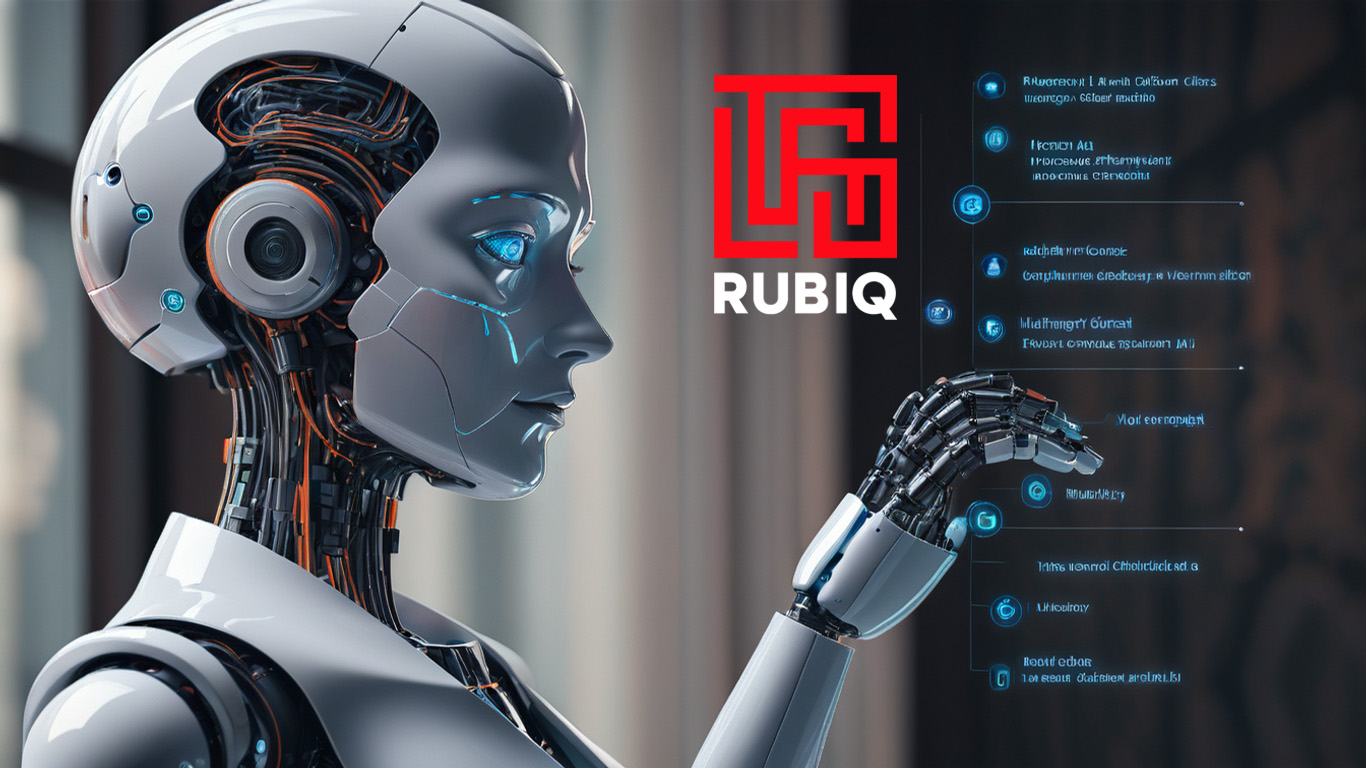In the rapidly evolving landscape of technology and business, Artificial Intelligence (AI) has emerged as a powerful tool for transforming various aspects of organizational operations. One area where AI’s impact is particularly profound is in the monitoring and evaluation of internal controls. Internal controls are essential, in more traditional terms, mechanisms that organizations use to ensure the integrity of their financial and operational activities and safeguard assets. However, in the concept of, Continuous Control Evaluation & Monitoring, the mechanisms can be extended, to be seen to provide assurance over compliance to internal policies and external legislation and regulations, prevent fraud and cybersecurity risks, maintain an ethical culture and help to highlight, human errors, negligence and willful misconduct, further to help to detect lack of skills, understanding in process execution and restrictive and overly complex processes, which create bottlenecks in meeting objectives.
Within this broader concept of Internal Controls, leveraging AI for these processes not only enhances efficiency but also improves accuracy and responsiveness to correction and remediation. When you are dealing complex risk profiles, AI augmented continuous controls monitoring can make all the difference in the overall control assurance process. Taking just cyber risks for example, where according to a recent study completed by Imperva, in their 2024 Bad Bot Report, they indicate that nearly half of the internet traffic identified is NOT HUMAN, its bots, and most are up to no good! Dealing with this risk landscape, one cannot hope to rely on the human evaluation of control alone.
The approach to every organization’s GRC Strategy has to step up to dealing with this type of Risk Landscape.
Here’s how AI is revolutionizing internal controls monitoring and evaluation.
The Role of Internal Controls, in terms of a GRC Framework
Before diving into AI’s role, it’s crucial to understand what the broader concept of continuous internal controls monitoring and evaluation entails. Internal controls are procedures, policies and technical configured rules and specifically designed control monitoring validity statements, (statements of evidence of effectiveness of controls) implemented by an organization to:
- Ensure embedment and enforcement of the companies’ policies, procedures, rules and evidence control validity statements.
- Ensure that governance and compliance is effective and efficient and that the delegations of authority are accurate and ethical and in line with the organizations approved frameworks, per the defined roles and responsibilities within the organization.
- Ensure that legal obligations are known and effectively met by the organization.
- Ensure that the ethical principles set and approved by the organization are upheld and values are well adopted within the culture of the organization.
- Ensure the accuracy and reliability of financial reporting.
- Ensure the satisfaction of each and every client, related to the products and services supplied by the organization.
- Safeguard assets against unauthorized use or theft.
- Mitigate and control opportunities for fraud.
- Mitigate and control opportunities for cyber-attacks.
- Ensure compliance with laws and regulations.
- Promote operational efficiency and effectiveness & mitigate against crisis and disaster that would interrupt operations of the business and affect sustainability of the business.
- Performance evaluation and every functional level of the business.
- Continuous monitoring of all of the above.
Traditional methods of monitoring and evaluating internal controls, generally involves overly manual processes, and sifting through siloed, often unstructured data, lack of current data and poor quality of data, which can be time-consuming and prone to human error, resulting in inability to keep pace with the volume and complexity of modern business transactions. And certainly never achieving the ideal of continuous control monitoring across the full spectrum of aspects, as detailed in the bullet points above.
AI in Internal Controls Monitoring
AI brings several innovative approaches to continuous monitoring of internal controls and reporting of assurance and attestation of effectiveness of controls in place or lack thereof, offering significant advantages over traditional methods. We highlight some of the value to be gained through AI Internal Controls Monitoring below:
1. Real-Time Monitoring
AI systems can continuously monitor 100% of all transactions and activities in real-time, identifying anomalies or unusual patterns that may indicate emerging risks, control breaches, control failures or fraudulent and or negligent activities. This is achieved through specific well-defined algorithms that are applied in real time on transactional data across all key functional areas of the business, which delivers rapid and immediate results. Alternatively, this can be achieved over time, with Machine Learning algorithms, with volumes of data, that learn from historical data to distinguish between normal and abnormal behaviors. A combination of both approaches would make a good foundation for your AI augmented control assurance and attestation framework.
2. Data Analytics and Predictive Insights
Advanced data analytics, powered by AI, can process vast amounts of data from various sources, be it structured data or unstructured data, to provide deep insights into potential risks and control weaknesses. Predictive analytics can forecast future risks based on historical trends, enabling proactive rather than reactive management.
3. Automated Auditing
AI can automate repetitive auditing tasks, across 100% of all transactions, verses sample testing which may miss critical problems. AI Internal audits can rapidly process and highlight issues, such as matching invoices to purchase orders, checking for compliance with policies, and verifying transaction details, identifying miss-classifications of data, highlight missed payments, incorrect invoice values in reoccurring billing, failure to meet compliance obligations, such a FICA or POPIA / GDPR, etc. ect. This not only reduces the workload for human auditors but also minimizes the risk of oversight.
4. Natural Language Processing (NLP) & Sentiment Analysis
NLP capabilities enable AI to analyze and interpret unstructured data, such as emails, contracts, content in questionnaires and survey feedback responses and other text documents, including informal messaging such as WhatsApp or Telegram. This is crucial for identifying compliance issues, contractual obligations, and identifying potential risks embedded in textual data that traditional systems might miss. Furthermore, NLP and intuitive sentiment analysis AI can help to highlight sensitive areas of hidden risks, such as employee discontent or frustration, processes too complex or manually time consuming thus causing bottlenecks in delivery, client dissatisfaction, collusion detection, all through sentiment analysis and abilities to pick up on the emotional tone or resonance that is discovered in the word construction and word usage, by the human individual writing the text, or through voice recordings.
5. Enhanced Fraud Detection
AI’s ability to analyze patterns and detect anomalies plays a critical role in fraud detection. By continuously learning from new data, AI systems can identify subtle signs of fraudulent activity that might go unnoticed by traditional methods.
6. Support Risk Treatment Decision Making Related to Risk Appetite and Tolerance
Through the training of unique specialized AI Models, AI can be taught to understand unique principles set in an organizations Risk Appetite and Risk Tolerances framework and so drive informed and intuitive decisions support to Risk Owners, without the need for specialist and experts, as this expertise has uniquely been trained into the AI Models.
AI in Risk Detection & Internal Controls Evaluation, Assurance and Attestation Processes
Evaluating the effectiveness and efficiencies of internal controls, is another area where AI shines. Here’s how:
1. Risk Assessment
AI can enhance risk assessment processes by analyzing vast datasets to identify high-risk areas that require more stringent controls. Machine learning models can predict potential control failures, allowing organizations to address issues before they escalate. Specific focused algorithms written to align with control objectives, can assist to raise risks, issues and concerns to data and risk owners, on a daily basis vs waiting to report on risk registers quarterly or even worse, annually. The AI algorithms can further assist in the rapid remedial actions and interventions, as well as ensuring the right decisions are made in terms of the organizations Risk Appetite and Tolerance set levels. All supporting the risk management process more wholistically and taking away the need for cumbersome risk assessment and control processes, which in the human realm are time consuming and cumbersome.
2. Control Testing
AI can streamline the process of testing controls by automatically selecting 100% of the transactions in structured or unstructured data and then executing tests, and analyzing results, missing nothing. With sample testing there is always the risk that the problem in the data set was not included in the sample, thus leaving the real control failure or hidden risk occluded from Risk and Control owners. Making use of Transactional Data Based GRC, on 100% of all transactions, improves the efficiency and accuracy of control evaluations, ensuring that any deficiencies are promptly identified and addressed in rapid turnaround remedial actions.
3. Continuous Improvement
AI systems can provide ongoing feedback on the performance of internal controls, suggesting improvements, based on data analysis. This supports a continuous improvement approach, where controls are regularly updated to adapt to new risks and business and regulatory changes.
Challenges and Considerations
While AI offers significant benefits for continuous risk detection and internal controls monitoring and evaluation, there are challenges and considerations to keep in mind:
Data Quality and Integrity: The effectiveness of AI depends on the quality and integrity of the data it processes. Organizations must ensure that their data is accurate, complete, and up to date. When building out your GRC Algorithms content, it is important to include in your algorithms stack, detection of poor data quality and potential of erroneous data or missing data that may skew your decision making.
Integration with Existing Systems: Integrating AI with existing control systems and processes can be complex and may require significant changes to infrastructure and workflows. Making sure that effective change management processes are followed and that you have a sound framework for ethics and governance of AI in place, prior to engaging in AI augmented Continuous Control Monitoring and Risk Detection projects.
Ethical and Legal Considerations: The use of AI in control monitoring, raises ethical and legal questions, particularly around data privacy and decision-making transparency. Organizations must navigate these issues carefully to maintain trust and compliance. As stated above, it is a wise idea to engage with competent professional advisors, that have experience in GRC AI project, so that you ensure your Ethics in AI Framework is sound and aligned with your overall GRC strategy and business strategy.
Human Oversight: While AI can automate many tasks, human oversight remains crucial. AI systems should augment, not replace, human judgment, particularly in complex or sensitive areas. This issue again illustrates the need for a correctly crafted, Ethics in AI Framework, prior to launching into such projects.
Conclusion
The integration of AI into internal controls monitoring and evaluation represents a significant advancement for organizations aiming to enhance their control environments. By providing real-time monitoring, advanced analytics, and automation, AI enables more effective and efficient continuous risk detection and ongoing control monitoring processes. However, successful implementation requires careful consideration of data quality, integration challenges, and ethical implications. As organizations continue to adopt AI, they can look forward to more robust, responsive, and resilient internal control systems, ultimately contributing to stronger governance and operational excellence.
RUBIQ Transactional Data Based GRC Frameworks
RUBIQ are specialists in the end-to-end process of building out an effective GRC AI augmented strategy, within any organization, that is agile and will grow effectively within and with your organization.
Click the link below to make a request for a free initial consultation to start your GRC AI augmented strategy.
Interested in a Case Study on GRC Augmented with AI within a real business context? Click the link to download the case study.
Are you concerned about how exposed you are to cyber risks and the potential of data breaches, click the link to get a free quote to conduct a Cyber Security Maturity Benchmark Evaluation.





